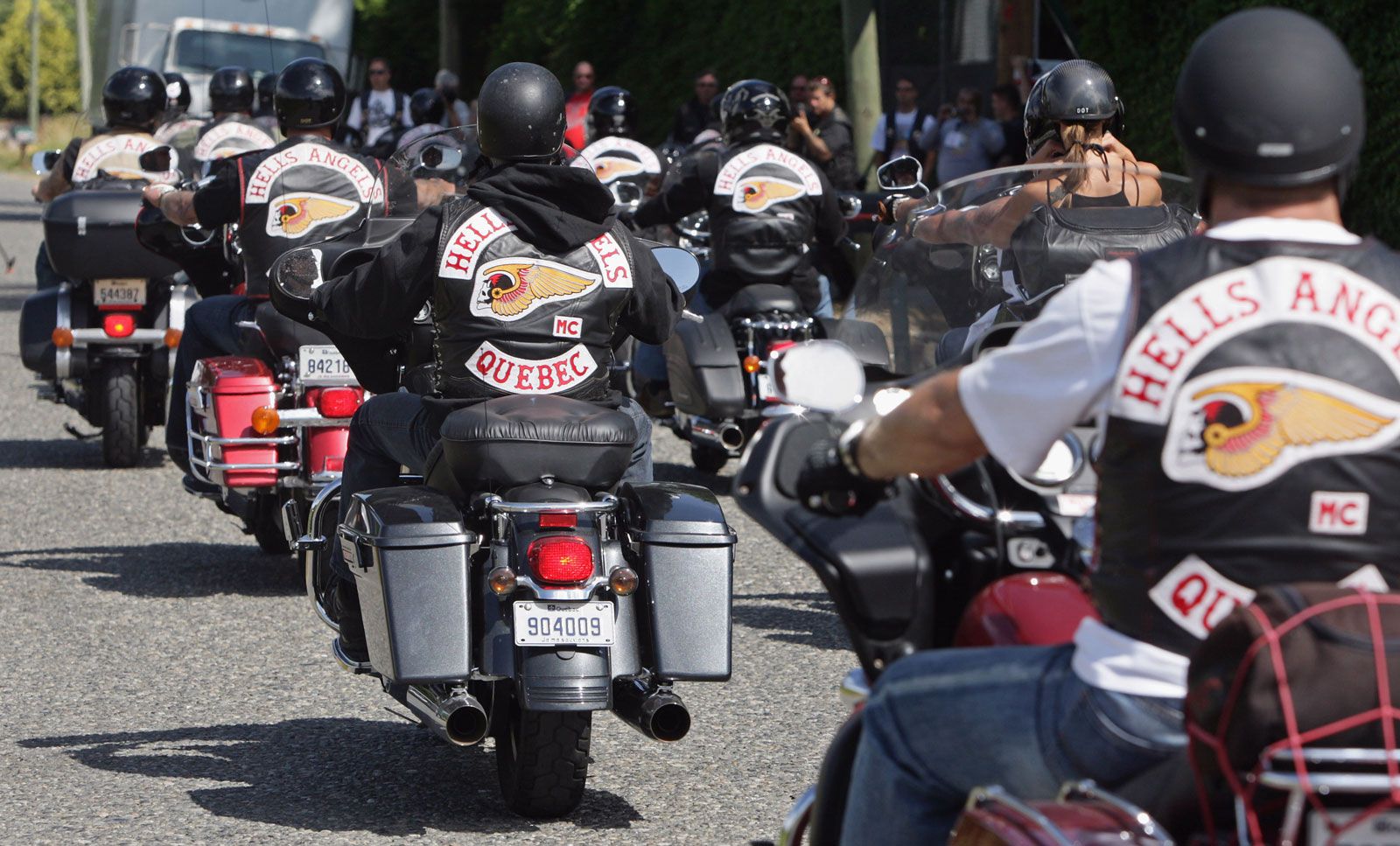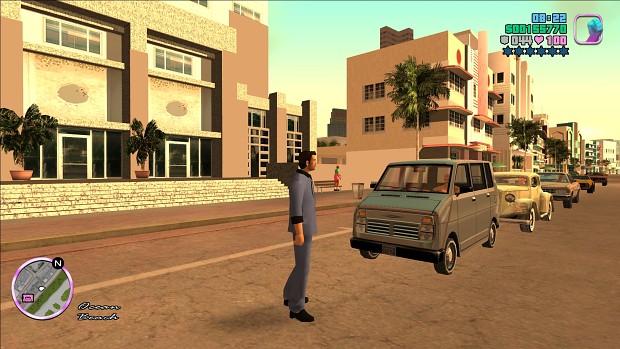The History And Evolution Of The Hells Angels Motorcycle Club

Table of Contents
The Genesis of the Hells Angels (1948-1950s): Early Days and Founding
The Hells Angels' origins are rooted in the post-World War II era of California. The socio-economic climate of the time, coupled with a yearning for camaraderie and adventure among returning veterans, provided fertile ground for the rise of motorcycle clubs. The early biker culture, characterized by a sense of rebellion and freedom, attracted many who sought an alternative lifestyle outside mainstream society. The Hells Angels origins are often traced back to 1948, in San Bernardino, California, although the exact date and circumstances remain debated.
- Founding Members and Arvid Olson: While pinpointing a single founder is difficult, Arvid Olson is frequently cited as a key figure in the early Hells Angels. He and other veterans formed the nucleus of the club, establishing its initial structure and identity. Other foundational members played crucial roles in shaping the club's early image and activities.
- Early Activities: In contrast to their later notoriety, early Hells Angels activities were primarily centered around social gatherings, motorcycle rides, and a strong sense of brotherhood. This camaraderie and shared passion for motorcycles formed the bedrock of the club's early existence.
- Differentiation from Other Groups: Even in its nascent stages, the Hells Angels began to differentiate themselves from other motorcycle groups through their chosen name, their distinctive style, and a growing sense of exclusivity. This early development of a unique identity would prove crucial in their subsequent rise.
The Rise of the Hells Angels: Expansion and Criminal Activity (1960s-1970s)
The 1960s and 70s marked a period of significant expansion and transformation for the Hells Angels. The club rapidly spread across the United States, fueled by the burgeoning counterculture movement and a growing involvement in criminal activities. Drug trafficking, violence, and other illegal activities became increasingly intertwined with the Hells Angels' identity.
- Expansion and Criminal Activities: This era saw a dramatic increase in the Hells Angels' involvement in criminal enterprises. Drug trafficking, particularly of methamphetamine and other narcotics, became a significant source of revenue and power for the club. Violence, both internal and directed towards rivals, became commonplace.
- Media Portrayal and Hunter S. Thompson: The media played a crucial role in shaping the public perception of the Hells Angels. Hunter S. Thompson's iconic book Hell's Angels: The Strange and Terrible Saga of the Outlaw Motorcycle Gangs provided a controversial, albeit influential, portrayal of the club, fueling both fascination and fear.
- Counterculture Connection: The Hells Angels, to a degree, tapped into the rebellious spirit of the counterculture movement. This association, however, was complex and often contradictory. While embodying anti-establishment sentiments, their criminal activities often clashed with the ideals of the broader counterculture.
- Internal Conflicts: The rapid growth and increased criminal activity led to internal conflicts and power struggles within the club. These internal battles often resulted in violence and further contributed to the group's volatile reputation.
The Hells Angels in the Modern Era (1980s-Present): Global Expansion and Legal Battles
The Hells Angels have continued to evolve and adapt in the modern era. Their global expansion, coupled with ongoing legal battles, has shaped their activities and public image in significant ways. They now operate in numerous countries across the globe, maintaining a complex structure and a persistent, albeit often challenged, presence.
- Global Expansion: The club's reach extends far beyond the United States. Chapters have been established in Europe, Asia, and other parts of the world, demonstrating the organization's remarkable capacity for global expansion.
- Legal Challenges and the RICO Act: Law enforcement agencies have employed various strategies, most notably the RICO (Racketeer Influenced and Corrupt Organizations) Act, to combat the criminal activities of the Hells Angels. This has led to numerous high-profile legal battles and ongoing efforts to disrupt the club's operations.
- Adaptation and Evolution: The Hells Angels have shown remarkable resilience, adapting to changing social and legal landscapes. Their structure and methods have evolved, making it increasingly challenging for law enforcement to dismantle the organization completely.
- Current Status and Activities: Today, the Hells Angels remain a significant presence in the criminal underworld, although the specifics of their current activities are often shrouded in secrecy. Their legacy continues to be a subject of intense scrutiny and ongoing investigation.
The Hells Angels' Subculture and Symbolism
The Hells Angels' subculture is characterized by a distinctive set of symbols, rituals, and a hierarchical structure. Their imagery is instantly recognizable and deeply ingrained in popular culture.
- Symbols and Imagery: The iconic "Death Head" logo is the most prominent symbol, representing the club's rebellious and often violent nature. Other symbols and patches signify membership status, chapter affiliation, and other important aspects of the club's internal structure.
- Patches and Colors: The specific colors and patches worn by members carry significant meaning, denoting rank, experience, and achievements within the club. This system of symbolic communication reflects the intricate social hierarchy within the Hells Angels.
- Club Structure and Hierarchy: The Hells Angels operate under a strict hierarchical structure, with a clear chain of command and defined roles for different members. This highly organized structure is essential for their operations and survival.
Conclusion
The history and evolution of the Hells Angels Motorcycle Club is a complex and multifaceted story. From its origins as a post-war biker group, the HAMC has transformed into a globally recognized, and highly controversial, organization. Its journey reflects a complex interplay of social factors, economic opportunities, and legal challenges. The club's enduring presence underscores the persistent allure of rebellion, the power of brotherhood, and the enduring challenges posed by organized crime. Learn more about the fascinating, yet complex, history of the Hells Angels Motorcycle Club. Dive deeper into the rich and often turbulent legacy of this iconic biker group. Further research into the Hells Angels Motorcycle Club can reveal surprising insights into biker culture and organized crime.

Featured Posts
-
 Gaza Captives Plea For Release From Former Israeli Soldiers
May 26, 2025
Gaza Captives Plea For Release From Former Israeli Soldiers
May 26, 2025 -
 Explore Jenson And The Fw 22 Extended Features And Details
May 26, 2025
Explore Jenson And The Fw 22 Extended Features And Details
May 26, 2025 -
 Atletico Madrid In Geriden Gelip Kazandigi Maclar
May 26, 2025
Atletico Madrid In Geriden Gelip Kazandigi Maclar
May 26, 2025 -
 Scene Du 128e Sexe Le Grand Cactus Face A La Censure Du Csa
May 26, 2025
Scene Du 128e Sexe Le Grand Cactus Face A La Censure Du Csa
May 26, 2025 -
 I Naomi Kampel Se Ilikia 54 Eikones Apo Tis Diakopes Tis Stis Maldives
May 26, 2025
I Naomi Kampel Se Ilikia 54 Eikones Apo Tis Diakopes Tis Stis Maldives
May 26, 2025
